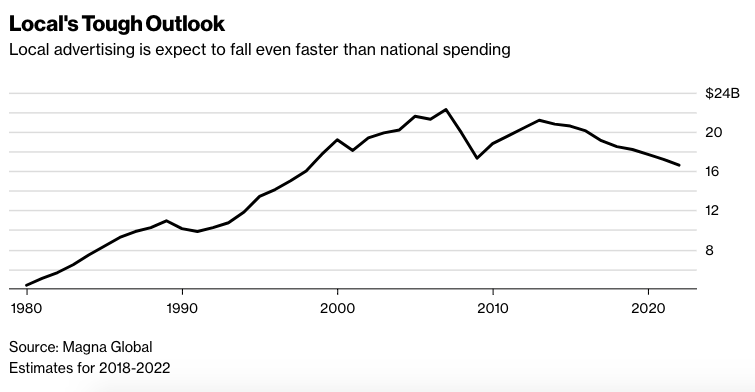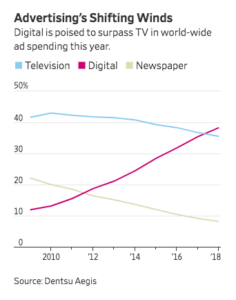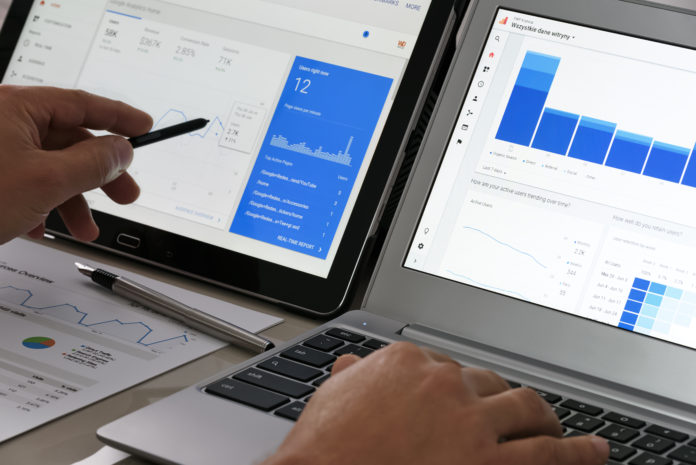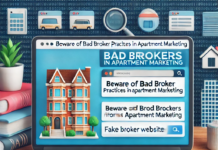Recently, news reports depict many Fortune 500 companies reducing digital ad spend. In particular, some of the top advertisers in the world, such as Procter & Gamble, dropped digital ad spend by $200 million last year. The Wall Street Journal reports:
“P&G, long the biggest advertiser in the world, said it reduced digital ad spending by more than $200 million last year, shifting its money to advertising platforms that help it reach a larger number of consumers in more effective ways.”
Regardless of the size of your company, $200 million is a lot of money. Additionally, in 2017, U.S. television advertising fell close to 8%. According to Bloomberg, the decline was the steepest drop in the last 20 years (not including recessions).
“The decline in TV viewership is accelerating as online rivals Google and Facebook have increased their investments in video, capturing almost every new advertising dollar entering the marketplace.”
In reality, the U.S. television market will continue to exist. However, media companies, which own cable stations, and rely on advertising business models, must capture more internet advertising to flourish.  However, overall global advertising continues to grow. In fact, according to recent reports by GroupM, global ad spend projects to grow 4.3% in 2018.
However, overall global advertising continues to grow. In fact, according to recent reports by GroupM, global ad spend projects to grow 4.3% in 2018.
As a result, traditional media and legacy ad firms must find ways to adapt to the digital ad world. For example, as the WSJ reports, many traditional ad agencies also report drops in earnings and confusion for clients.
Why?
Large organizations struggle to adapt. Identifying the right market and serving the right ad at the right time requires experience and expertise. Large organizations, which includes traditional ad agencies, struggle to find the right mix and deliver to clients.
Data is Eating the Ad Market
A common phrase in the tech and business world is software is eating the world. But, in the digital marketing world, data is eating the world.
Current tools mixed with expertise means any business can find the right audience at the right time. Plus, data provides informations that aids in your decision making process. Beyond standard A/B testing, business owner can determine the best time to advertise and understand their marketing ROI.
In fact, large companies understand the power of data and pressure agencies to provide more transparency.
“Clients are pressuring ad firms to embrace technological change. Big advertisers such as Bridgestone Corp. and Procter & Gamble Co. are seeking more transparency on whether ad campaigns are effective. They also expect guidance on how to survive the digital disruption.”
Prior to the rise of digital advertising, marketers were confident that half of a client’s money reaches their clients. The only problem was they didn’t know which half. Well, in digital advertising that problem is resolved. Plus, they know if it drives more business!

However, for traditional ad agencies, the shift means correctly interpreting the data. Advertising and marketing will always require creative individuals. After all, companies still need to capture attention. But, creative is simply not enough. The shift in digital ad spend means delivering that creativity to the correct audience.
For example, McDonald’s wanted a comprehensive strategy and changed long-time agencies to deliver the results they demanded.
“The fast-food chain wanted a marketing plan covering everything from social-network posts to food-tray liners, according to people involved with the account. McDonald’s thought Publicis’s Leo Burnett unit, its main advertising agency at the time, wasn’t adept enough at using data to quickly produce online ads and target minute slices of its customer base.”
Case Study: Ineffective Ads Waste Money
Insightful businesses learn from their peers and competition. Fortunately for small businesses, large public companies must share their results with the world. Therefore, Procter & Gamble provides a case study in delivering ineffective ads. As noted, P&G reduced their digital ad spend. But how did this impact their performance?
Not much at all.
As P&G reported in the quarter ending in June 2017, which they reduced digital marketing spend by $100 million, had little impact on their business. Jon Moeller, P&G CFO, shared the digital ad dollars came from targeted ads on platforms with fake traffic. The initial round of ad cuts ceased spending on sites known for objectionable content and bots.
Procter & Gamble Co. said that its move to cut more than $100 million in digital marketing spend in the June quarter had little impact on its business, proving that those digital ads were largely ineffective.
“What it reflected was a choice to cut spending from a digital standpoint where it was ineffective, where either we were serving bots as opposed to human beings or where the placement of ads was not facilitating the equity of our brands.”
Furthermore, P&G CEO David Taylor provided more context on their focus to cut spending on programs and ad campaigns that are not working.
“We got some data that said either it was in a bad place or it was not effective. And we shut it down and said, ‘We’re not going to follow a formula of how much you spend or share of voice. We want every dollar to add value for the consumer or add value for our stakeholders.”
Yes, a company such as P&G follows the same rationale that any small or growing business must follow: spend money effectively!
Grow Your Business Based on Your Marketing ROI
Companies that work with experienced firms can rely on knowledgeable teams to provide impactful guidance. As the case study showed, find the right digital marketing team and they will help your business grow without unnecessary spending.
For example, in a recent survey, we found out that 45% of small and medium-sized businesses (SMBs) do not measure the ROI on their digital marketing spend. Digital marketing can be a pretty significant investment for SMBs. Unless you measure the ROI of your online spend, you are not making the most of your investment. As our data has shown a full 45% of SMBs are leaving the success of the digital marketing to chance.
Therefore, as John Wanamaker stated that “Half the money I spend on advertising is wasted; the trouble is, I don’t know which half.” For 45% of SMB owners out there, it seems that not much has really changed. That being said, measuring digital marketing ROI can be quite challenging when you consider that SMBs are now using an average of 7.8 different channels to promote themselves – that figure does include both traditional and digital marketing activities but still reflects the increasing complexity of SMB marketing.
What does the drop in digital ad spend mean?
Not much. Pay attention to your data and it will lead your business growth.
Digital marketing requires a comprehensive approach. Mixing and matching various vendors for SEO and social media or SEM and creative no longer works. The data feeds each section of your marketing plan (plus any traditional print or TV spend). The creative mindset must infiltrate the thinking of your entire marketing team.
For example, at All Points Digital, our SEO and SEM teams integrate with social media to ensure customers receive on-brand messages in all marketing channels. Plus, we learn from our SEM data, which enhances SEO (and vice-versa). To identify and cultivate your target audience, you don’t necessarily need to increase spend, you need to increase decision making.
We pride ourselves on taking a comprehensive and data-driven approach. Plus, we have the results to show it works.




